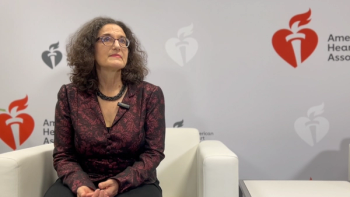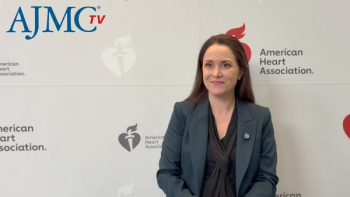
Daniel J. Klein Highlights Barriers to Accessing Innovative Oncology Care
There are multiple barriers to accessing innovative oncology care from the design of healthcare benefits to a patient’s position on the federal poverty level, explained Daniel J. Klein, president and CEO of the Patient Access Network (PAN) Foundation.
There are multiple barriers to accessing innovative oncology care from the design of healthcare benefits to a patient’s position on the federal poverty level, explained Daniel J. Klein, president and CEO of the Patient Access Network (PAN) Foundation.
Transcript (modified)
What are the key barriers to accessing innovative care in oncology?
There a number of barriers that we feel are affecting access to innovative oncology care. And they include things like the design of healthcare benefits, particularly the high deductibles and high coinsurance; and the tiering of drug benefits, particularly pushing many of the new and innovative treatments into tier 4 and tier 5, high coinsurance tiers. So we think that those are significant barriers for many patients depending on the type of insurance coverage they have.
Another big barrier is just the benefits management, if you will, within health plans. We’ve seen a substantial increase in the burden being placed on providers in the form of step therapy, or clinical care guidelines requirements, prior authorization requirements, preferred formularies—that’s another type of barrier that makes access to care difficult for some patients.
Also, the way that a number of benefit plans are now looking at reimbursement to providers, where more and more reimbursement is either value- or quality-based. And that’s a mixed bag that can be a good thing if it ensures that more appropriate care is being provided, but it can be a problem if providers are perhaps perversely de-incentivized from providing care they think best. So the incentive payments around quality and value are sort of working their way through the system, and we’ll see to what degree they either promote or detract from the best quality care and access to innovative treatments.
Another area that we’re concerned about is just the overall inflation in the cost of therapy. And not just the medications, but therapy across the board: hospital care, professional services — the cost of treatment across the board is becoming more and more challenging for patients, particularly patients in the 200-400% of the federal poverty line level. Patients who are above the level, where they get cost-sharing reductions in the Affordable Care Act, and above the level, where they get the subsidies under Medicare such as the lower income subsidies in Part D, or qualified beneficiaries under the rest of Medicare. So for those patients, underinsurance is a problem that can affect their access to innovative therapies.
I guess, lastly, the final problem we see is an inadequate safety net. With all of the out-of-pocket costs that have built up over the past few years, we see that patients have difficulties finding ways to cover those costs. And the PAN Foundation obviously provides a safety net for many patients—we help nearly a quarter million patients per year with their copays and deductibles—but we’re just one organization and the need is much greater than what we can meet.
There are a group of charities similar to PAN that, my guess, are probably providing assistance to over a million patients a year. But there are, just in Medicare alone, there are over 16 million people between 200% and 400% of the federal poverty level and, almost by definition, if someone in that range becomes seriously ill or gets a chronic illness, they’re likely to be underinsured within Medicare Part D. There’s no out-of-pocket limit under Medicare, and patients today still would need to go through the deductible and coverage gap before they even got into the 5% catastrophic period. And even there if they’re on an expensive medication, and many of the oncology medications are costly, they would be paying $300-$500 a month for treatment.
We think there are a number of barriers, there are different ways to address them, and that, at least for the time being, organizations like PAN are a critical part of the safety net to address those barriers.
Newsletter
Stay ahead of policy, cost, and value—subscribe to AJMC for expert insights at the intersection of clinical care and health economics.















































